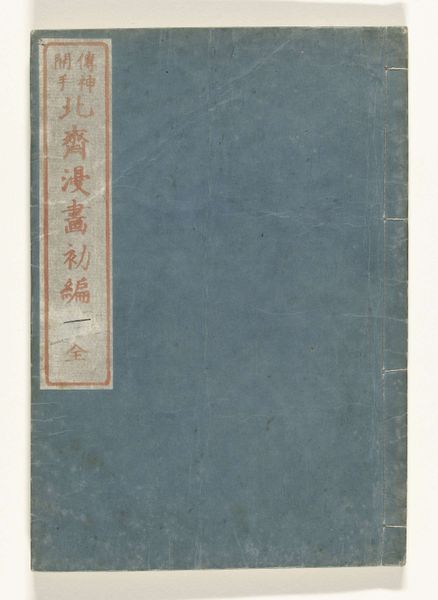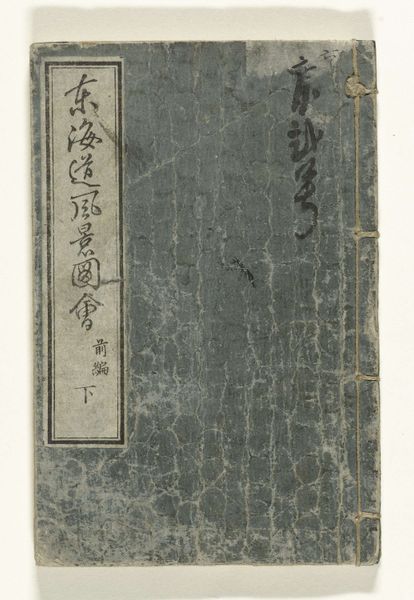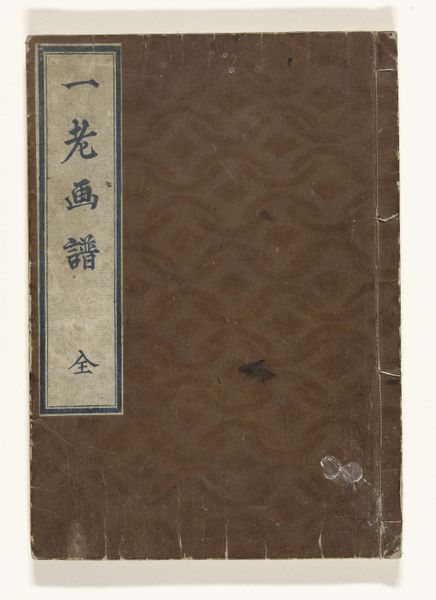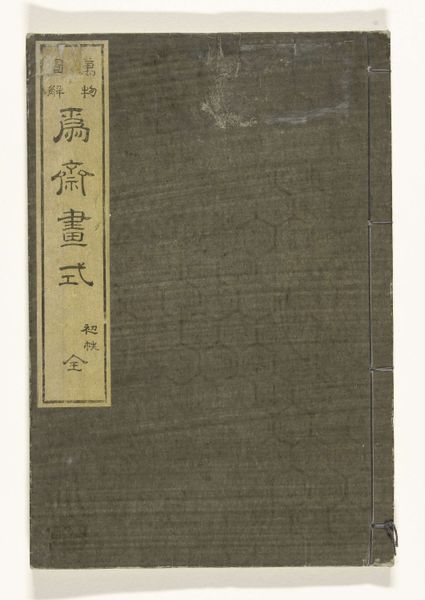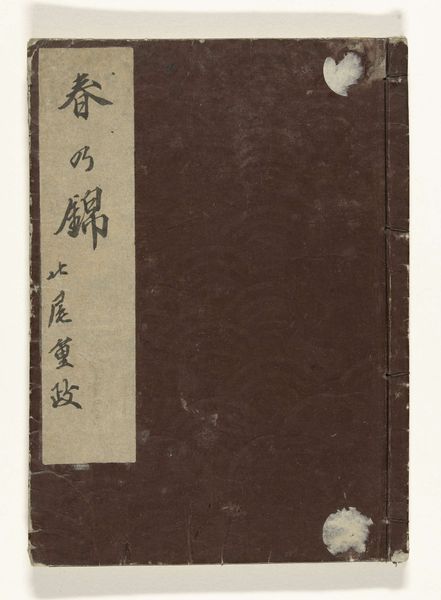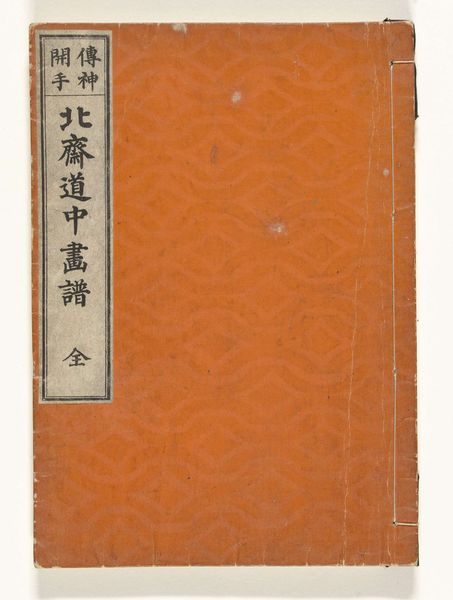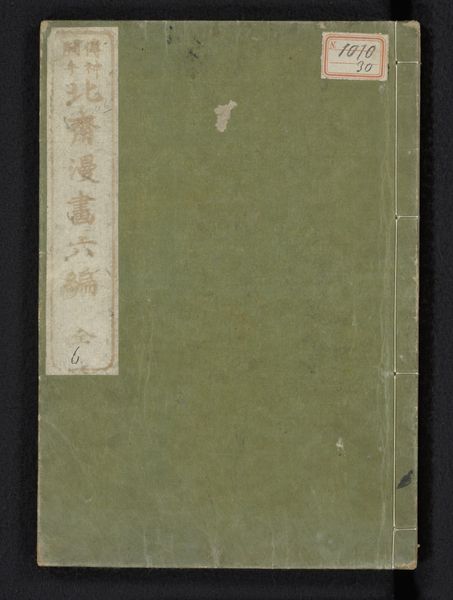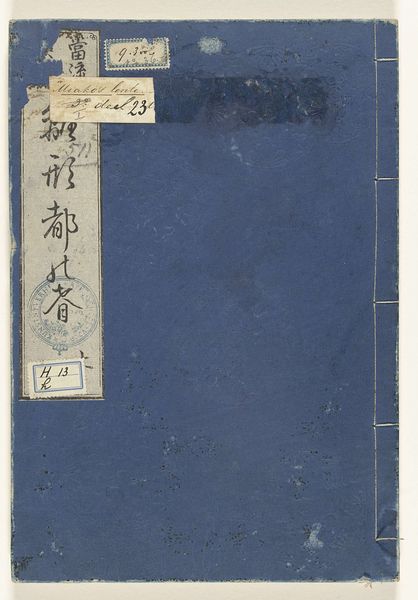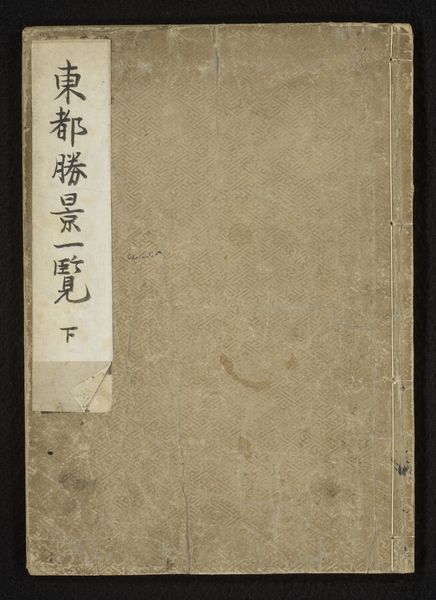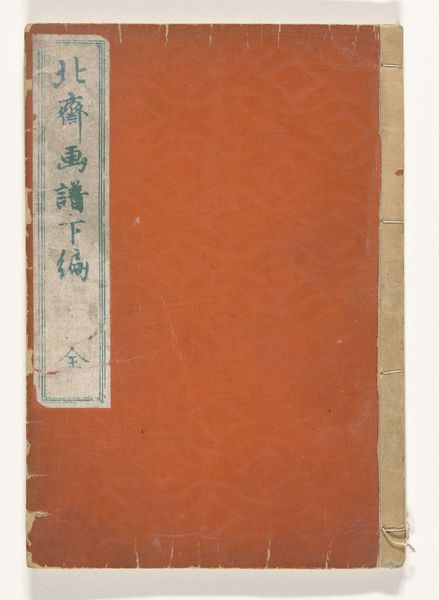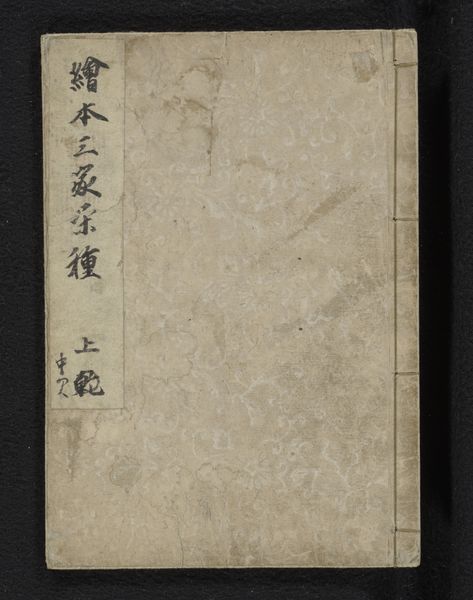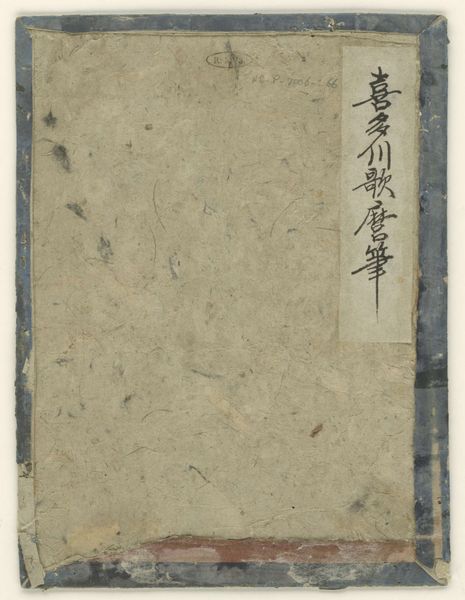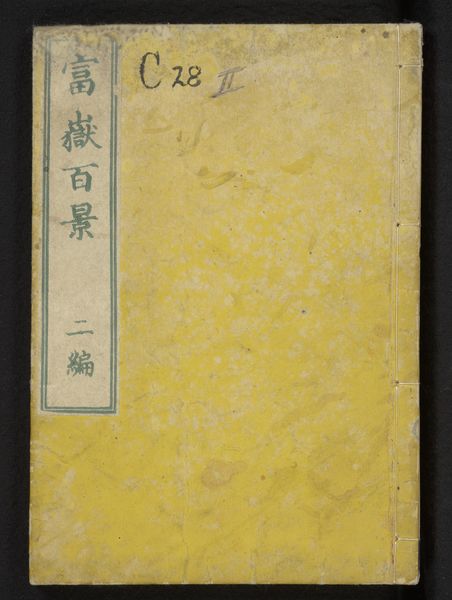
Dimensions: height 225 mm, width 150 mm
Copyright: Rijks Museum: Open Domain
Curator: Oh, hello there. Isn't it marvelous? This is “Album met voorbeelden van alle dingen - 3,” by Kobayashi Eitaku, created in 1881. It’s held right here at the Rijksmuseum. He used ink and colored pencil on paper, for this ukiyo-e piece. Editor: Well, I must say, from first glance, the piece holds such a striking antiquity. That blue evokes a feeling of depth, like looking into weathered seas or old texts brimming with untold stories, quite literally! Curator: Indeed, the aged feel is intrinsic to understanding the context. In late 19th-century Japan, there was a renewed interest in reviving classical Japanese art forms. Editor: A deliberate reaching back, perhaps a reclaiming. Ukiyo-e itself experienced waves of popularity throughout its history. How might Eitaku be engaging with earlier representations or critiques within that medium? Was he trying to connect it to burgeoning Meiji period national identity formation? Curator: Fascinating point. Ukiyo-e was initially a genre reflecting urban pleasures but evolved. What I find personally evocative here, in his meticulous detail and intention of preservation, is how his work resists some aspects of radical Westernization that came with the Meiji Restoration. Instead, Eitaku seems to whisper of timelessness, inviting viewers into a quiet appreciation of line and form. Editor: The detail certainly belies a slower pace, doesn’t it? I also notice the textual elements of the title—could you discuss it more in relation to visual depiction? Curator: Absolutely. The inscription hints at a compilation, "Examples of All Things". These 'things', filtered through his artistic lens, acquire new resonance. As for symbolism...one could argue that such encyclopedic efforts implicitly aim to categorize, a behavior inherently driven by an understanding and, thus, eventual control, of the natural world. Editor: That impulse, and what he chooses to include— or, significantly, exclude— reflects particular cultural power structures at play, doesn't it? This work shows us how even artistic classification is never a politically neutral act. Curator: Beautifully said. Editor: I will hold that thought. Thank you! Curator: Yes, thank you, my friend.
Comments
No comments
Be the first to comment and join the conversation on the ultimate creative platform.
